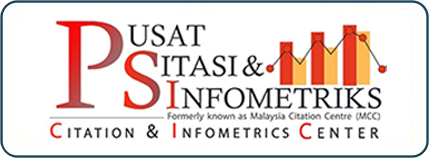Structural and Electrochemical Properties of Binary ZnO:Al Nanocomposites as Anode for Lithium-ion Batteries
DOI:
https://doi.org/10.33102/mjosht.v10i2.420Keywords:
zinc oxide, aluminium, thermal evaporation technique, nanostructures, anodeAbstract
In conventional lithium-ion batteries (LIBs), carbon compounds are commonly utilised as the anode owing to their great performance, low cost, and abundance. However, due to the limited storage capability of pure carbon materials that restrict further improvement of LIBs, zinc oxide (ZnO) has been one of the promising anode materials to be used as an alternative to strengthen the electrochemical performance of LIBs due to its high theoretical capacity of 987 mAh g-1. This study aims to synthesise ZnO:Al nanowires using the hot-tube thermal evaporation method. Three types of samples are made using this method by varying the concentration of 0 wt% (S1), 3wt% (S2), and 6 wt% (S3) of aluminium (Al) during the Al deposition process. The EDX findings indicated that the sample has a high proportion of zinc (Zn) and oxygen (O), with the S3 sample having the highest Al concentration after being deposited. The most substantial diffraction peak for XRD of all samples was found at (101), exhibiting a single crystalline hexagonal structure with optimum growth direction on the c-axis. For EIS analysis, the S3 sample has the lowest bulk resistance and maximum ionic conductivity. In conclusion, the ZnO sample with 3 wt% of Al as a dopant was selected as the optimum result to synthesise a homogenous surface of ZnO:Al with good crystallinity by using a hot-tube thermal evaporation process and giving the best conductivity in electrochemical performance.
Downloads
References
Motors. In IOP Conference Series: Earth and Environmental Science (Vol. 692, No. 2, p. 022103). IOP Publishing. https://doi.org/10.1088/1755-1315/692/2/022103
Tarascon, J. M., & Armand, M. (2001). Issues and challenges facing rechargeable lithium batteries. nature, 414(6861), 359-367. https://doi.org/10.1038/35104644
Liu, S. (2021). Competition and valuation: a case study of Tesla Motors. In IOP Conference Series: Earth and Environmental Science (Vol. 692, No. 2, p. 022103). IOP Publishing. https://doi.org/ 10.1088/1755-1315/692/2/022103
Hasegawa,K., Gunji, H., Kijima, R., Eguchi, M., Nishitani-Gamo, M., Ando, T., & Nakagawa, K. (2021). Electrochemical performance of marimocarbon/lithium titanate composites synthesized by hydrothermal method for lithium-ion batteries. Journal of Materials Science, 56, 16602-16611. https://doi.org/10.1007/s10853-021-06319-w
Huang, Y., Liu, X., Lu, L., Fang, J., Ni, H., & Ji, Z. (2015). Preparation and characterization of ZnO/SnO 2 composite thin films as high-capacity anode for lithium-ion batteries. Applied Physics A, 120, 519-524. https://doi.org/10.1007/s00339-015-9209-x
Xianlai Zeng, Jinhui Li & Narendra Singh (2014) Recycling of Spent Lithium-Ion Battery: A Critical Review, Critical Reviews in Environmental Science and Technology, 44:10, 1129-1165. https://doi.org/10.1080/10643389.2013.763578
Zhou, L., Yang, H., Han, T., Song, Y., Yang, G., & Li, L. (2022). Carbon-based modification materials for lithium-ion battery cathodes: Advances and perspectives. Frontiers in Chemistry, 10, 914930. https://doi.org/10.3389/fchem.2022.914930
Li, H., Liu, Z., Yang, S., Zhao, Y., Feng, Y., Bakenov, Z., Zhang, C. & Yin, F. (2017). Facile synthesis of ZnO nanoparticles on nitrogen-doped carbon nanotubes as high-performance anode material for lithium-ion batteries. Materials, 10(10), 1102. https://doi.org/10.3390/ma10101102
Norris, D. J., Efros, A. L., & Erwin, S. C. (2008). Doped nanocrystals. Science, 319(5871), 1776-1779. https://doi.org/10.1126/science.1143802
Zhang, L., Zhang, J., Liu, Y., & Guo, S. (2015). Effect of aluminium doping amount on the electrochemical properties of ZnO nanoparticles as anode for lithium ion batteries. Micro & Nano Letters, 10(4), 217-219. https://doi.org/10.1049/mnl.2014.0631
Mayeen, A., Shaji, L. K., Nair, A. K., & Kalarikkal, N. (2018). Morphological characterization of nanomaterials. In Characterization of Nanomaterials (pp. 335-364). Woodhead publishing. https://doi.org/10.1016/B978-0-08-101973-3.00012-2
Scimeca, M., Bischetti, S., Lamsira, H. K., Bonfiglio, R., & Bonanno, E. (2018). Energy dispersive X-ray (EDX) microanalysis: A powerful tool in biomedical research and diagnosis. European Journal of Histochemistry, 62(1), 89–99. https://doi.org/10.4081/ejh.2018.2841
Bindu, P., & Thomas, S. (2014). Estimation of lattice strain in ZnO nanoparticles: X-ray peak profile analysis. Journal of Theoretical and Applied Physics, 8, 123-134. https://doi.org/10.1007/s40094-014-0141-9
Hou, Q., Meng, F., & Sun, J. (2013). Electrical and optical properties of Al-doped ZnO and ZnAl2O4 films prepared by atomic layer deposition. Nanoscale research letters, 8(1), 1-8. https://doi.org/10.1186/1556-276X-8-144
Choi, W., Shin, H. C., Kim, J. M., Choi, J. Y., & Yoon, W. S. (2020). Modeling and applications of electrochemical impedance spectroscopy (EIS) for lithium-ion batteries. Journal of Electrochemical Science and Technology, 11(1), 1-13. https://doi.org/10.33961/jecst.2019.00528
Belkhaoui, C., Mzabi, N., Smaoui, H., & Daniel, P. (2019). Enhancing the structural, optical and electrical properties of ZnO nanopowders through (Al+ Mn) doping. Results in Physics, 12, 1686-1696. https://doi.org/10.1016/j.rinp.2019.01.085
Sirirak, R., Phettakua, P., Rangdee, P., Boonruang, C., & Klinbumrung, A. (2024). Unveiling the impact of excessive dopant content on morphology and optical defects in carbonation synthesis of nanostructured Al-doped ZnO. Powder Technology, 435, 119444. https://doi.org/10.1016/j.powtec.2024.119444
Xie, S. H., Liu, Y. Y., & Li, J. Y. (2008). Comparison of the effective conductivity between composites reinforced by graphene nanosheets and carbon nanotubes. Applied Physics Letters, 92(24), 243121. https://doi.org/10.1016/j.jallcom.2014.05.036
Malek, M. F., Mamat, M. H., Musa, M. Z., Khusaimi, Z., Sahdan, M. Z., Suriani, A. B., ... & Rusop, M. (2014). Thermal annealing-induced formation of ZnO nanoparticles: Minimum strain and stress ameliorate preferred c-axis orientation and crystal-growth properties. Journal of Alloys and Compounds, 610, 575-588. https://doi.org/10.1063/1.2949074
ltammar, K. A. (2023). A review on nanoparticles: characteristics, synthesis, applications, and challenges. Frontiers in microbiology, 14, 1155622. https://doi.org/10.3389/fmicb.2023.1155622
Romaguera, Y., Leyet, Y., Guerrero, F., Aguilera, L., Pérez, J., & Guerra, J. D. L. S. (2009). Influence Of Bi3+ Cation On Microstructure And Electrical Properties Of The ZnO Ceramics. Revista Cubana de Química, 21(3), 47-56.
Grewal, M. S., Kisu, K., Orimo, S. I., & Yabu, H. (2022). Increasing the ionic conductivity and lithium-ion transport of photo-cross-linked polymer with hexagonal arranged porous film hybrids. Iscience, 25(9), 104910. https://dx.doi.org/10.2139/ssrn.4125674
Ragupathi, V., Panigrahi, P., & Subramaniam, N. G. (2020, March). Enhanced electrical and optical properties of Al doped and ZnO nanoparticles for optoelectronic application: eco-friendly green route. In Journal of Physics: Conference Series (Vol. 1495, No. 1, p. 012040). IOP Publishing. https://doi.org/ 10.1088/1742-6596/1495/1/012040
Downloads
Published
Issue
Section
License
Copyright (c) 2024 Maisurah Mukhtar, Najiha Hamid, Syahida Suhaimi Suhaimi, Azwani Sofia Ahmad Khiar, Peshawa Omer Amin

This work is licensed under a Creative Commons Attribution 4.0 International License.
The copyright of this article will be vested to author(s) and granted the journal right of first publication with the work simultaneously licensed under the Creative Commons Attribution 4.0 International (CC BY 4.0) license, unless otherwise stated.














